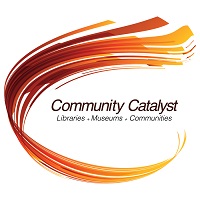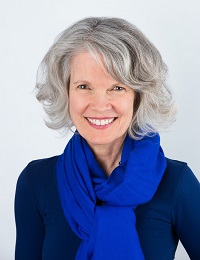
Editor’s Note: This past fall, IMLS launched Community Catalyst, a new initiative aimed at sparking a conversation around ways to help libraries and museums develop a deeper understanding of the best ways to work with communities to bring about positive change. Through a cooperative agreement with Reinvestment Fund, the agency scanned the literature and gathered input from the library, museum, and community revitalization fields. The results of that scan are part of a newly released report (PDF, 28MB). This is the latest in a series of blogs this month highlighting the initiative.
By Dr. Kathryn K. Matthew
Director
Ahhh, birdwatching. What better excuse for a walk around the neighborhood? There’s a Cardinal calling “what cheer, what cheer.” A Blue Jay with its raucous “jaay, jaay” call. Set aside these distractions and you might see nearby a flock of LBJ’s (“little brown jobs” in birdwatching parlance) working their way towards you through the bushes. This mixed flock could have several warblers, a titmouse, downy woodpeckers, and a couple of chickadees. They are all insect eaters and flocking together enables them to literally beat the bushes and scare up things that somebody (not necessarily the bird that found it) will catch and eat. It’s a cooperative relationship. By the end of the day everyone goes their separate ways and nobody goes away hungry, not even that bright, loud Blue Jay who may follow the group.
It’s a relationship built on trust. In this case it is trust that at least one of the birds is scanning the sky at all times looking for hawks. It is trust that whoever sees that hawk first will squawk out an alarm call. That trust allows everyone to focus on the task at hand, looking under leaves, poking at bark, and doing all the other things (besides looking at the sky) necessary to find food.
Observations from nature, including birdwatching, can translate in to how we think about cooperation in community catalyst work. At their core, real cooperative relationships allow everyone to focus on a common goal and bring their unique skills together; they are not only about getting everyone to sign a Memorandum of Understanding or attend yet another organizing event. We have all been at “partner” meetings where we attend but hope to get through without adding a task to our “To Do” list. Real cooperative relationships have benefits for increased synergies and participation, rather than decreased engagement. A small town mayor once said to me that you can tell which partnerships are going to be successful because the meetings get larger rather than smaller throughout time. He must have been a birdwatcher. Mixed foraging flocks form spontaneously and get larger as they get going. They evolve and adapt as conditions change.
Consider the “birds” in your mixed flock of potential partners. There are the mavens [1] (no, not Ravens), who are the builders, engineers, and process-creating types. There are the connectors who know everyone and who are interested in and connected to a wide variety of potential supporters, stakeholders, and community members. The people that connectors gather, it turns out, also just happen to be the people who can help get things done. Salespeople (or advocates) need no introduction, you know the type, and they are outgoing and eager to promote. They will turn any idea into a “sales” pitch and in doing so help you gain broad buy-in. Salespeople need the connectors for prospecting new “customers” but they also need ideas to promote. That’s where the mavens can help; mavens have knowledge about what is needed to get the job done in your community work.
And then there are the disrupters (such as Blue Jays) whose loud calls can sometimes act as an early warning signal to others. That reminds me of the role a disrupter can play in a neighborhood development project, alerting potential funders or leading stakeholders to take action. (I heard a great story about this at the ALA meeting this past week.)
If the dynamics of cooperative relationships sounds to you like a mixed foraging flock, you are right. Each of the birds in the flock has different skills that when blended together benefit everyone. You can tell everyone is benefiting because the flock gets bigger and the effectiveness of the group increases. Those individuals may never have shared a common purpose before, but the strength of the group’s shared goal combines each member’s unique skills and mitigates each individual’s risks. More eyes on the common goal of finding safety or food increases the chances of success for the group (flock). Together, the flock collectively learns the landscape. Some ornithologists believe that a larger group of birds lessens the risk that one individual will be picked out by a hawk. That paradigm for mitigating risk and collective learning is probably true within Collective Impact as well.
As one participant in the IMLS Community Catalyst Town Hall (Sept. 2016) remarked:
“This session [on Partnerships] has also prompted me quickly and strongly to reach out to our partners (educational, community cultural and governmental, so far) in new ways. The partnerships had begun before the conference [Town Hall], but the conference alerted me to their crucial interconnected importance… We also need to be more aggressive in making concrete plans in our community partnerships, taking more risks…”
Funders often want evidence that the cooperative relationships you have formed are genuine. They want letters of agreement, evidence of resource sharing, maybe even specific flowcharts showing who does what to meaningfully partner. When these requests become a burden to you, it is time to ask yourself if you actually do have a real cooperative relationship. Easy, effective, and nearly spontaneous mixed species flocking should be not just for the birds. If the coalition for change is real and shared among institutions, the detailed work of planning, listening, sharing, documenting, monitoring, and adapting will flow.
Cooperative relationships are a way of "stretching" as you begin to see your community work in new ways. New potential partners or new roles for existing partners may be uncovered as part of asset mapping or stakeholder analyses. The types of relationships structured between cooperating organizations may ebb and flow depending on the stage of the community initiative, decision-making roles, or information required. Having compatible goals and complementary resources are key. 2
One Town Hall participant felt that it was important to look…”beyond the ‘usual’ partners by a community network analysis: looking at who lives, works, and plays in the community and their relationships to each other…” [In this instance there was a community-wide need to serve elderly widows, which they addressed by including a hair stylist on the team.]
The lesson learned from nature is that we should look for unlikely partners, listen to each other’s voices, and be open to defining our shared contributions in terms of their benefits to both our cooperative relationships and for our greater community.

About the Author
Dr. Kathryn K. Matthew was confirmed by the Senate in September 2015 as the 5th director of the Institute of Museum and Library Services. You can send her comments on the Community Catalyst Initiative by emailing communities@imls.gov
[1] See Malcolm Gladwell’s book “The Tipping Point” re: mavens, connectors, and salespeople.
2 See Robyn Eversole’s book “Knowledge Partnering for Community Development”